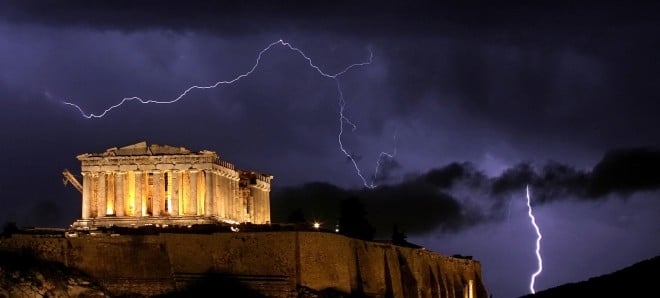Famous buildings with secret lives
An architect’s lofty vision for a structure often doesn’t survive once real people use it
Share

 Form follows function, or so says the modernist architectural maxim. Rubbish, replies Edward Hollis, an architect himself and author of The Secret Life of Buildings. Function never stands still. Architects may think they’re erecting lasting structures that can fulfill only one purpose, but the recalcitrant humans who actually use buildings, Hollis argues gleefully, waste no time at all in altering builders’ visions to suit their own ever-evolving needs.
Form follows function, or so says the modernist architectural maxim. Rubbish, replies Edward Hollis, an architect himself and author of The Secret Life of Buildings. Function never stands still. Architects may think they’re erecting lasting structures that can fulfill only one purpose, but the recalcitrant humans who actually use buildings, Hollis argues gleefully, waste no time at all in altering builders’ visions to suit their own ever-evolving needs.
Nor is this some evil wrought on perfection. The things generations of inhabitants have done to those defining buildings have created “something rich and strange,” a history in stone that captures the rise and fall of empires, Hollis convincingly argues in his survey of 13 iconic Western structures. They range from the Parthenon, the Platonic ideal of the perfect building (at least for centuries of aesthetes) to Las Vegas’s Venetian Resort Hotel (no one’s definition of the ideal).
Hollis’s tiny biographies show that the best buildings have the best stories, laced with heroism, sex, greed and murderous death. Take his discussion of Athens’s fifth-century-BCE , named after the virgin (parthenos in Greek) goddess Athena. Hollis subtitles the chapter “In which a virgin is ruined.” It’s been a long-drawn-out affair. Eight centuries after it was built, Christians turned the Parthenon into a church, reversing its orientation, so that the back became the front; 11 centuries after that, Muslim Turks turned the church into a mosque and—less forgivably—a military storage depot as well. In 1687, Venetians bombarding the Turks hit the gunpowder store, causing an explosion that rained marble shards for over a kilometre.
If that wasn’t bad enough, Lord Elgin showed up in 1816. The British nobleman, by bizarre coincidence (via an infection he picked up in Istanbul) as noseless as any of the classical statues he collected, convinced the Turks to allow him to remove, for “safekeeping,” several hundred pieces of the Parthenon, primarily sculptures. Most ended up in the British Museum, but some went astray, including two heads in Copenhagen that fit bodies in London. What church and mosque builders, artillerymen and rapacious collectors began, Athens’s toxic air pollution once seemed likely to finish, although recent restoration work has halted the decline. But Hollis, who thinks the modern battle to restore the Parthenon’s virginity absurd, cheerfully embraces its eventual demise, for then “the Parthenon will have become nothing but an idea, and at last it will be perfect.”
And so it goes. Hollis considers the most famous architectural appropriation of them all, the transformation of a Byzantine masterpiece of Christian art, the church of Hagia Sophia, into a masterpiece of Islamic art, the mosque of Ayasofya. It was a successful marriage, he writes, because the structures, in modern jargon, “read” each other harmoniously, a sign of historical continuity in the east. Hagia Sophia, after all, had main doors that once belonged to a temple of Zeus. Then there’s Gloucester Cathedral, which grew helter-skelter—generations of master masons solving the structural problems bequeathed by past builders—as an ever more elaborate tomb for King Edward II, murdered by his wife and her lover. And for what, Hollis asks sardonically, is this building famous today? As a stand-in for Hogwarts school in Harry Potter films. What that might say about the history of Britain, Hollis has no comment.
But nothing epitomizes history’s twists like the Venetian hotel, a Las Vegas homage to an Italian city rapidly becoming a theme park itself. Venice is hollowing out: there are 11 million visitors a year, but only 58,000 Venetians are left, compared to three times as many 50 years ago. At current depopulation rates, the city will be as empty as the Nevada desert by 2034. But, Hollis confidently predicts, Venice’s exiles will come back daily to tend their top-of-the-line tourist attractions, including the Biennale, during which all that is innovative in contemporary art is displayed in a city that hasn’t changed in centuries.
Even Venice’s shiny replica in Las Vegas feels her age. Resort owner Sheldon Adelson has erected another $2.4-billion copy in Macau, a sound-stage city where the valets dress as gondoliers and the security guards as carabinieri, and everyone gambles to the muted strains of Vivaldi. Like a modern-day Marco Polo bringing Venice to China yet again, Adelson has paid tribute to the rising superpower by placing his newest dream Venice in Asia rather than America.